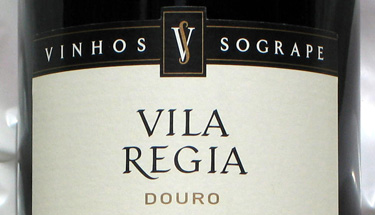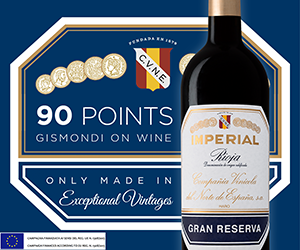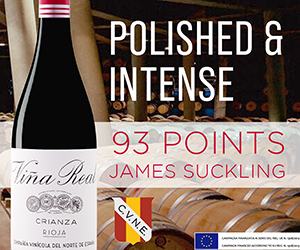Twenty years of aggressive expansion is coming to a screeching halt in the key wine-producing regions of California, Chile, Australia, Argentina and the south of France.
In fact some areas will be ripping out vines in an attempt to balance production levels with sales.
In France, hundreds of thousands of vines and millions of hectolitres of wine are to be destroyed under a proposed 10-year plan to restructure the table wine or vin de table industry.
In California, the Daily Wine News reports that a looming recession and a grape surplus do not bode well for much of the wine industry. The same story quoted Robert Smiley, dean of the University of California Davis Graduate School of Management as saying, "the arrival of vineyards planted in the 1990s to full production, means some basic grape costs have decreased by as much as 75 per cent."
How low grape prices will fall is anybody's guess, but there is no shortage of high-quality wine, which should make for interesting times for wine buyers.
If most industry professionals agree that modestly priced wines will come down in cost, there's less consensus about the implications of a recession on high-end products such as Napa Valley cabernet sauvignon, Bordeaux reds and other super-premium wines now made round the world.
Some producers have suggested to Smiley that they might create so-called "stealth" brands or labels not publicly affiliated with a winery that allow estates to dump product at a lower cost without damaging the reputation of the prestigious label.
Historically, super-premium wine prices are rarely affected by recession, but never have there been so many super-premium wines and never have prices been so out of whack.
Any combination of a prolonged recession and back-to-back superior vintages in Europe, South America, California or Australia could spell disaster for many wineries. Overpriced Canadian wine, and there is plenty of it, will be particularly vulnerable.
My sense is that prices will fall globally as consumers continue to discover the fabulous quality of inexpensive wine (particularly wines in the $10 to $35 range) and it will be tougher than ever in the future to convince them that they need to spend any more than that to enjoy a fine glass of wine.
All of the above inspired today's theme of inexpensive, quality reds. I have come up with six, very affordable, bottles -- but are they worth buying? Here are my notes.
The Lurton bonarda, which originally hails from Italy's northwestern Lombardy and Piedmont regions, is a soft, warm, generously fruity red that mixes earth, strawberry jam and a spicy clove/pepper finish. It is all you can ask for and more in a cheap red under $10.
Vina Patagonia is the Argentine winery behind the La Chamiza brand (as well as Isla Negra and Trivento). I had the chance to visit this impressive facility in Mendocino not long after its 1997 start-up where I discovered they produce stand-alone varietals and blended versions such as this bonarda sangiovese.
Look for an ultra-soft, earthy red, with prominent flavours of crushed, dark berries. Cheap, soft and tasty at a giveaway price. Stock up.
The wine-growing and wine-producing co-operative Lovico Suhindol, one of the first on the Balkan peninsula, was founded in 1909 and today is the biggest group in Bulgaria.
Its merlot has a slightly unclean, vegetal nose. The structure is thin with little extract and a weedy finish. It lacks the warmth and richness of flavours found in the first two Argentine reds.
The Gandia is a bargain red grown in the sunny climate of Valencia in Southern Spain and doing big business in some 70 countries. Look for light, cherry-berry fruit and a brush of oak in this mid-weight red that has a touch of acidity in the finish. A classic burger red.
Baga, periquita and tinta pinheira are hardly household red wine grapes but they make quite a statement in Sogrape's Terra Franca. Together they offer a scorched earth aroma mixed with black fruit and rhubarb. The textures are soft and round in this easy-sipping, warm-climate red that works well with grilled chicken or beef.
The finale takes us to the Douro, a region once known only for its fortified ports but one that is now the home of many impressive dry reds. There's a plummy, licorice, earth tone to the fruit that reminds one of port but the finish is well balanced, offering peppery, dry, leathery fruit. This is a well-made, fun-to-drink, sturdy red that is simply a bargain.
REDS UNDER $10
Wine: Bodegas Lurton 2001 Bonarda, Mendoza, Argentina
Price: $9.95
Stock No.: 459198
Score: 14.5/20
Comments: Earth, fruit and fire. Good value.
Wine: La Chamiza Sangiovese Bonarda, Mendoza, Argentina
Price: $7.95
Stock No.: 583716
Score: 14/20
Comments: A spaghetti red with style.
Wine: Suhindol (Lovico) 1999 Merlot, Bulgaria
Price: $7.95
Stock No.: 105981
Score: 11/20
Comments: Thin, weedy red.
Wine: Gandia 1999 Merlot, Hoya Valley, Spain
Price: $9.75
Stock No.: 362889
Score: 12/20
Comments: A classic burger red.
Wine: Terra Franca (Sogrape) 1999, Beiras, Portugal
Price: $9.95
Stock No.: 528372
Score: 12.5/20
Comments: Soft, round, easy-sipping.
Wine: Vila Regia (Sogrape) 1999 Douro, Portugal
Price: $8.95
Stock No.: 464388
Score: 13.5/20
Comments: Solid value, sturdy red.
Written By: ag

 quicksearch
quicksearch






